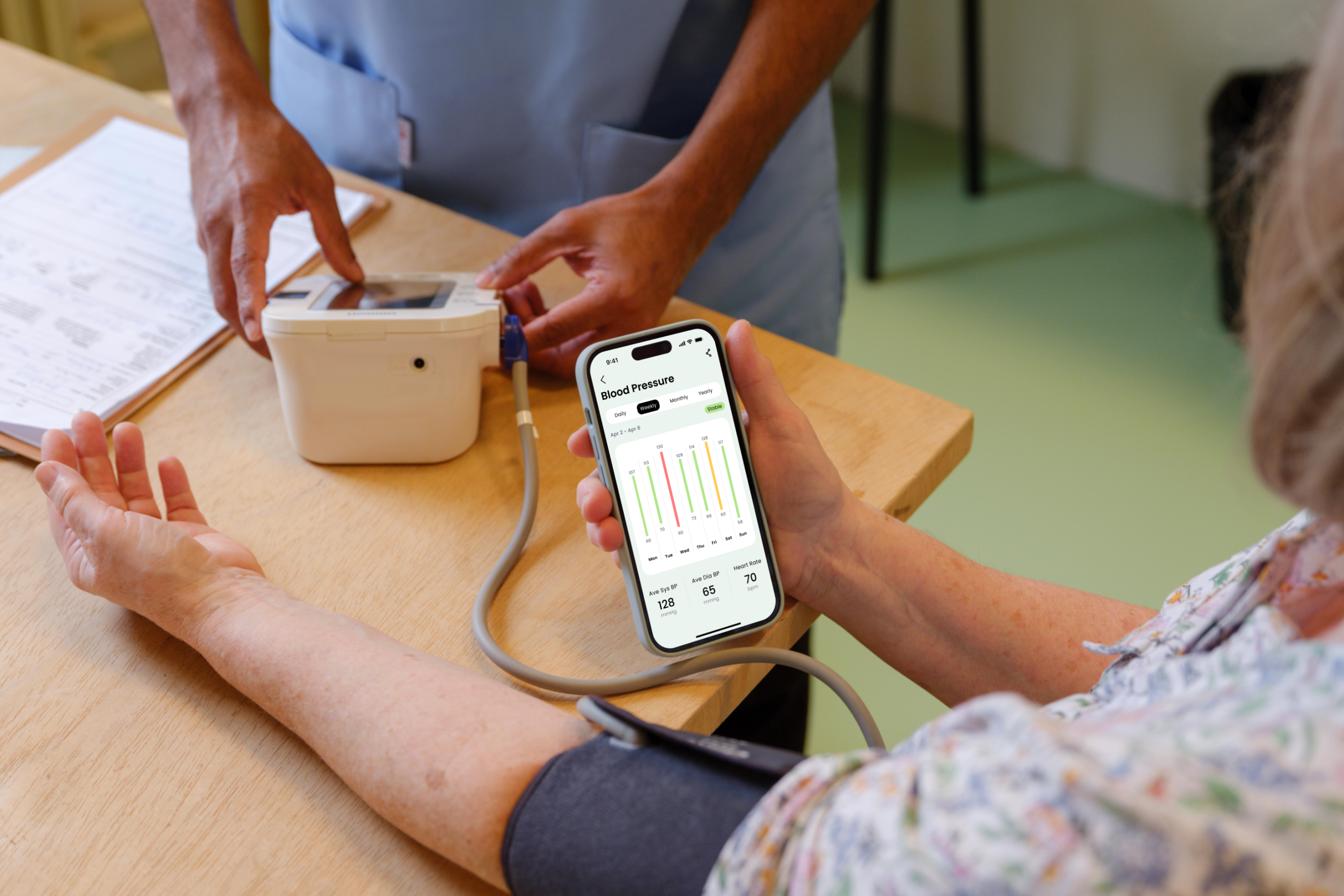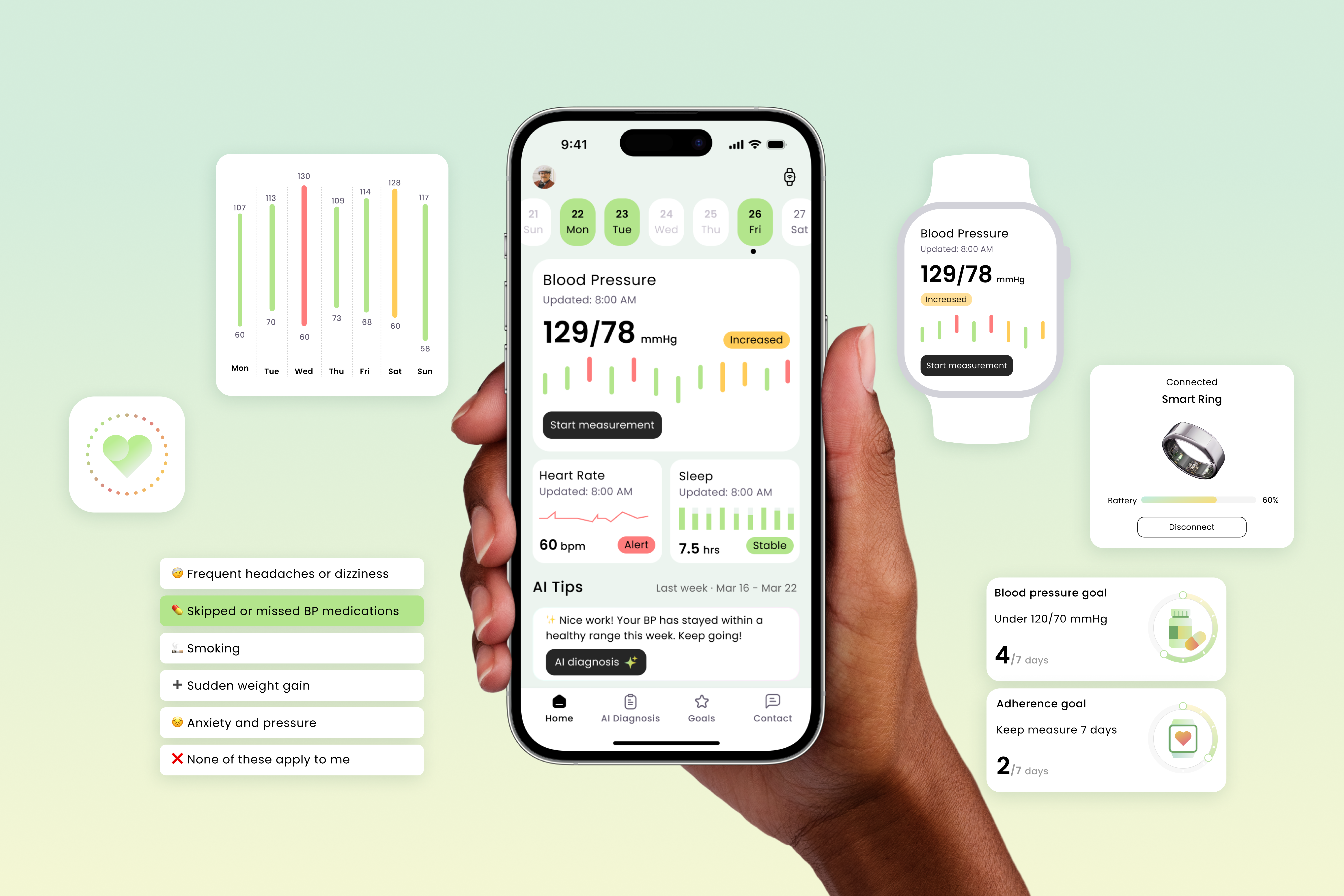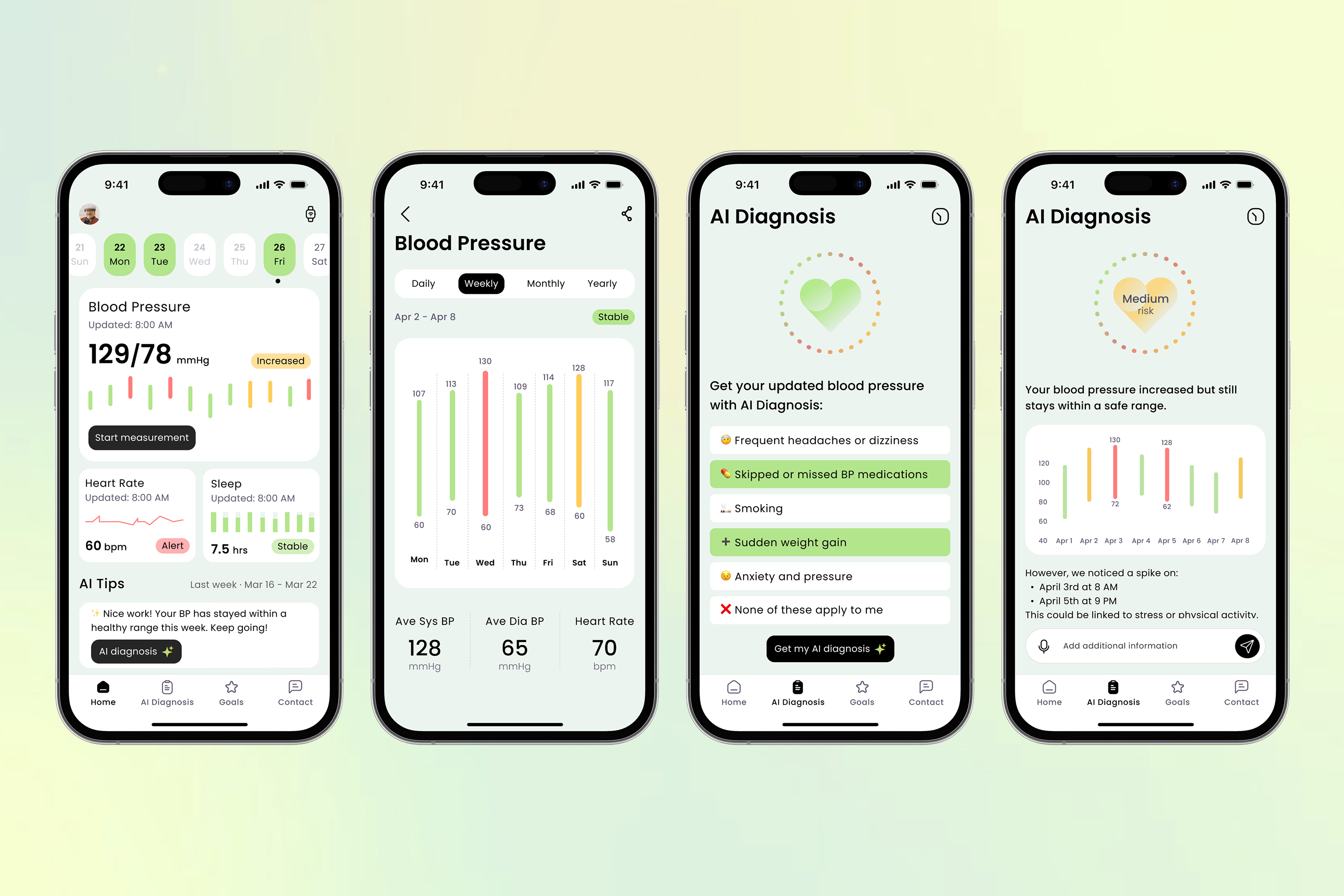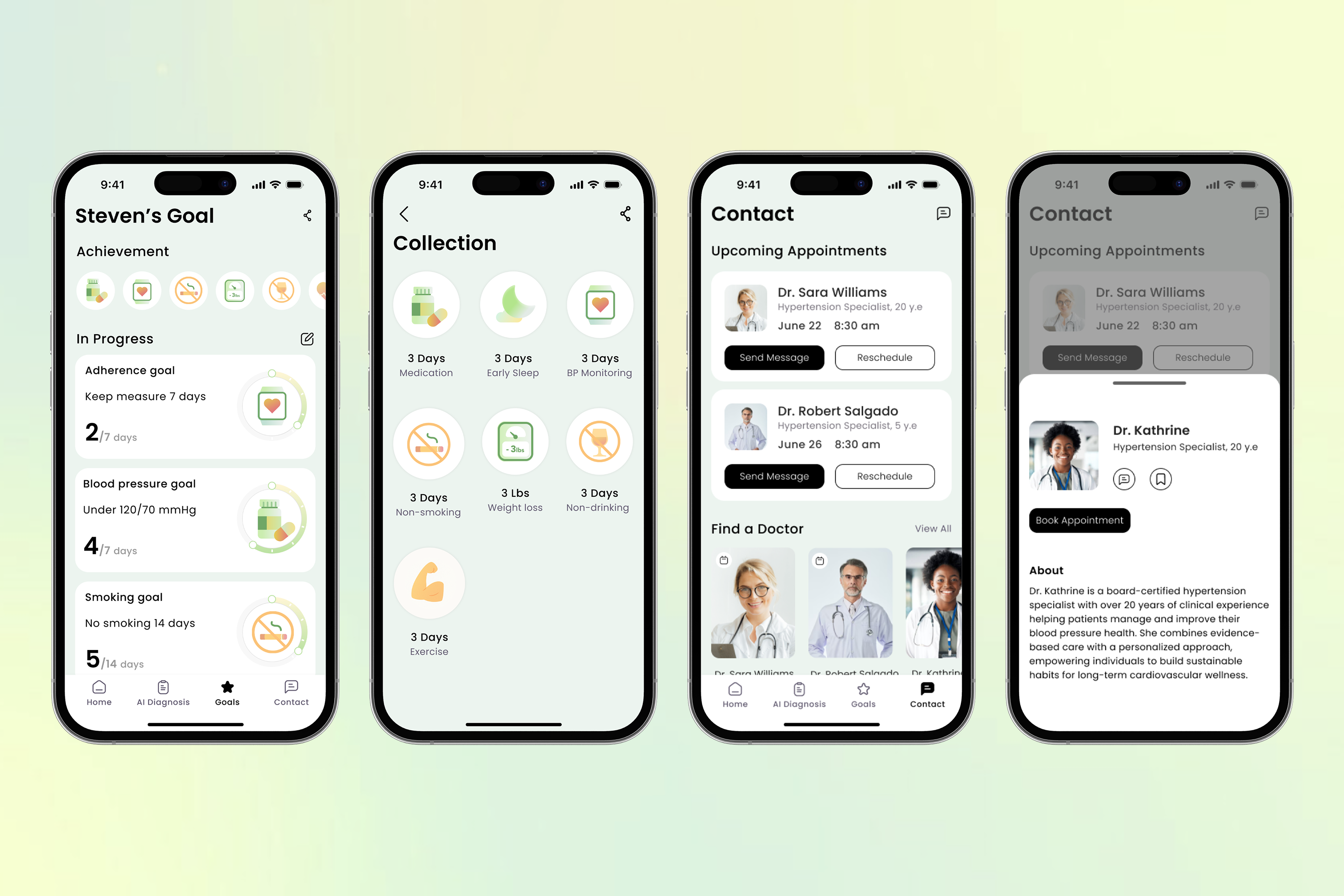
Designers
Chenxi Guo, Xinran Cheng
Year
2025
Category
New Talent
Country
United States
School
University of Washington

Three questions to the project team
What was the particular challenge of the project from a UX point of view?
The key UX challenge was addressing both short-term engagement and long-term risk prevention in hypertension management. We needed to understand why patients struggle to consistently measure and record their blood pressure, and how to support lifestyle changes that help reduce long-term health risks.
Through interviews with doctors and patients, we learned that managing hypertension goes beyond tracking—it requires sustained behavior change. However, many patients don’t fully understand their readings or receive timely feedback, especially when experiencing symptoms or abnormal spikes.
These insights led us to design features that help patients understand their data, stay motivated, and build healthy habits through AI tips and guidance.
What was your personal highlight in the development process? Was there an aha!-moment, was there a low point?
My personal highlight was an interview with a pharmacist that fundamentally shifted my perspective. Initially, I focused on meeting accessibility standards—but I soon realized that being truly patient-friendly goes beyond technical compliance. It’s about designing an experience that feels clear, intuitive, and supportive, especially for older users who may be unfamiliar with mobile or wearable technologies.
This insight led us to refine features like AI tips and diagnosis that offer encouragement and simulate a clinic-like experience, as well as simple goal-setting tools to keep users motivated. Every detail was designed to feel approachable, supportive, and easy to use—especially for those managing a chronic condition day to day.
Where do you see yourself and the project in the next five years?
I envision CareLink evolving into a comprehensive platform for chronic disease management, extending support to conditions such as diabetes and cardiovascular disease. With integration into healthcare systems and partnerships with providers, it can offer continuous, intelligent support that complements traditional care.
We also plan to improve the AI model—making it more responsive, easier to use, and better aligned with real clinical needs. Achieving this will require thoughtful design that balances privacy, usability, and integration into real-world healthcare workflows.
Personally, I hope to continue working at the intersection of healthcare and design—creating responsible technologies that help users manage health with confidence.


